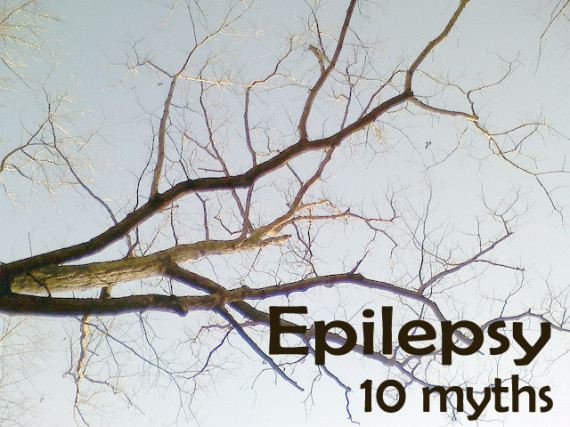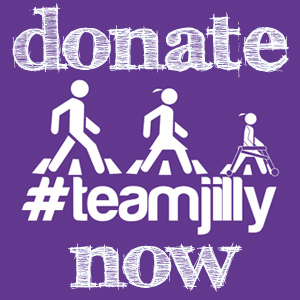This post is part of a series on epilepsy. You can see all of the posts HERE.
Today’s guest writer is Dr. Diane Stein. A leading neurologist in Southern California, and also one of the founders and organizers of Epilepsy Day at Disneyland.
1. Epilepsy is a childhood disorder that is life long.
Epilepsy happens to people over age 65 almost as often as it does to children aged ten and under. Seizures in the elderly are often the after effect of other health problems like stroke, head injury and heart disease. It is seen in veterans and others after head trauma (wear a helmet!!!). True, about 30% of children with epilepsy do not have their epilepsy controlled, however that means that 70% do not have seizures – and many many of those kids grow out of epilepsy.
2. If you see a person having a convulsion, you should force something in their mouth to prevent them from swallowing their tongue.
When I teach school children about seizures and epilepsy, I have them all stick out their tongues and then have them tug with their fingers on it. I ask, “Is your tongue attached?” They all laugh and say it is. I ask, “who can touch their nose with their tongue?” usually one can. I ask, “who can swallow their tongue?” Funny, no one can swallow their tongue. Then they all look at me really funny. I tell them that if they ask their parents what to do if they see a convulsion, most will either not know or say to put something in the person’s mouth to prevent them from swallowing their tongue. The kids love tricking their parents! I have heard they return to school the next day telling about how their parents DID think you can swallow your tongue during a convulsion. HA! Two-fer-one: kids learned about seizures and they roped their parents into learning also!
So, why not put something into their mouth? Because it is good way to chip teeth, puncture gums, or even break someone’s jaw. The correct first aid is simple. Just gently roll the person on one side and if you have something soft, put it under his head to protect him from getting injured. Tell everyone else to be calm and give him room. Convulsions generally stop on their own, if no ID is found, or the seizure lasts more than five minutes, call 911.
3. All seizures are “grand mal”, or whole body convulsions.
There are many kinds of seizures, contrary to what Hollywood would have you believe. When a seizure causes synchronized brain activity (like a flash mob) in the part of the brain that controls movement, then the seizure will be a convulsion. When a seizure causes brain activity in a part that leads you to smell, you will look fine to everyone else but be smelling something yucky like burning rubber. A seizure without convulsion can look like the person is moving aimlessly or like the person stopped during a fun activity and went blank. Sometimes he or she will just forget what they just did or heard.
4. Treating seizures with medication is dangerous or will cause a person to look dopey or will change their personality.
My goal, as a doctor, is to prevent seizures without causing side effects. If a drug could cause side effects, that does not mean that it will have any side effects in you or your loved one. If someone is started on a medication and has a side effect, they can change to another treatment.
5. Epilepsy is contagious.
As late as the early 1970 persons with epilepsy were locked away in old leper colonies when, in truth, epilepsy is about as contagious as a gun shot wound. Nope, can’t catch it.
7. People with seizure disorders should not work in jobs that are important or stressful.
This is really in the news recently as Coach Jerry Kill of the Minnesota Gophers, who has epilepsy with convulsions, has had convulsions that other people say on the side lines during games with many people watching. It is argued by a sports writer that he should retire because the stress is bad for him, because the people in the stands do not want to see him have a seizure and because he is not fit for duty. Hmmm – his team was an underdog and is now winning! They love him! He is doing his job.
People with epilepsy are found in all walks of life and at all levels in business, government, the arts and the professions. We aren’t always aware of them because many people, even today, do not talk about having epilepsy for fear of what others might think.
In a line up, you likely could not pick out the folks with epilepsy at one point in their lives.
8. Epilepsy is rare.
One in every 26 American’s will have epilepsy in their life, really. I likely have friends and family who have or had epilepsy. They are not chatty about it, they don’t want you to think they are crazy. Oh yeah, people with epilepsy are not possessed or caught by spirits, will not get crazy or dumb, just say’n.
There are more than twice as many people with epilepsy as the number of people with cerebral palsy, muscular dystrophy, multiple sclerosis, and Parkinson’s COMBINED. Epilepsy can occur by itself or may come as an added “bonus” with other conditions affecting the brain, such as strokes, head trauma, CP, Down’s Syndrome, genetic disorders, developmental disabilities and especially AUTISM.
9. With today’s medication, epilepsy is largely solved.
Epilepsy is a chronic medical problem that for many people can be successfully treated. This is similar to migraine; many with migraine use a medication to prevent headaches but some have frequent migraine attacks even with the best new therapies. Unfortunately, treatment doesn’t work for everyone and there’s a critical need for more research and treatments. As I said above, at least 30% of children with epilepsy continue to have seizures despite being on therapy.
10. Epilepsy is the same in everyone.
I know we all hate the “C” word (cancer) but for this answer, please think of epilepsy like cancer. We all know that there are many different types of cancer: breast cancer is not nearly the same as prostate cancer. They act different, affect people differently, can be something that kills you or something you have for years. Pancreatic cancer took Michael Landon, Steve Jobs and Patrick Swayze, quickly despite their ability to get the best care.
Epilepsy comes in many different forms. Some forms are very severe, unlikely to go away with any treatment and are likely to cause death. Other forms are less likely to be a problem in the person’s life at all with proper treatment.
For more information see www.epilepsy.com or the askdrstein you tube channel or see Epilepsy and Seizure Disorders: a Resource Guide for Parents and Caregivers.
Diane Stein MD
Any other questions about epilepsy? Things you’ve always wondered/believed? Ask away!























Great post! Especially because it doesn’t get down to all the “sciencey” info, just straight facts, love it!
Katie´s last blog post ..CPYTri, Du, Whew!
Thank you! As someone who suffers from “invisable” seizures I appreciate this post so much. You would be amazed (or, sadly you wouldn’t) how many people claim I use epilepsy as an excuse for poor social graces when I lose my connection with the moment during a seizure.
sarah´s last blog post ..We Win
Growing up I knew a family whose dad had epilepsy. He drove. People in the car with him each had a task they knew to do just in case there was a seizure while driving, but it was so good to see him not being limited by his epilepsy. // Also, Coach Kill is a very good football coach, but also a very good man. I am so glad that he has been willing to go public about his epilepsy. He deserves to be where he is, and he deserves to make the decision about what he can or can’t handle. (go Gophers!) // The one myth I believed until I started reading this blog: that epilepsy is rare. I didn’t realize how common it is. Thanks for the info. xo
Anne @ anne b. good´s last blog post ..my week in review: 9/13-19//2013
Thank you for this series! It has helped me to be more compassionate to everyone around me.
Thank you for this post. I didn’t know a lot of the information here. One of my friends has epilepsy, 3 kids, 1 on the way, a husband and leads a completely normal life! Checking out the shirts now!!
Alyson @Vintage Sunshine´s last blog post ..fall favorites
I have two friends with epilepsy. Both are brainiacs. Both of them who have fathers who marginalized their intelligence and abilities. One of their fathers is a doctor. My friends are both older (50 & 60) so I think the ignorance is more about the time when try grew up. My friend worked with me. None of us ever thought, when he had a seizure, that he wasn’t capable of doing the job. We all knew he tracked his seizures and that he was going to be angry he had another one at work. Like I said earlier, both are two of the smartest people I know.
Best,
Caryl